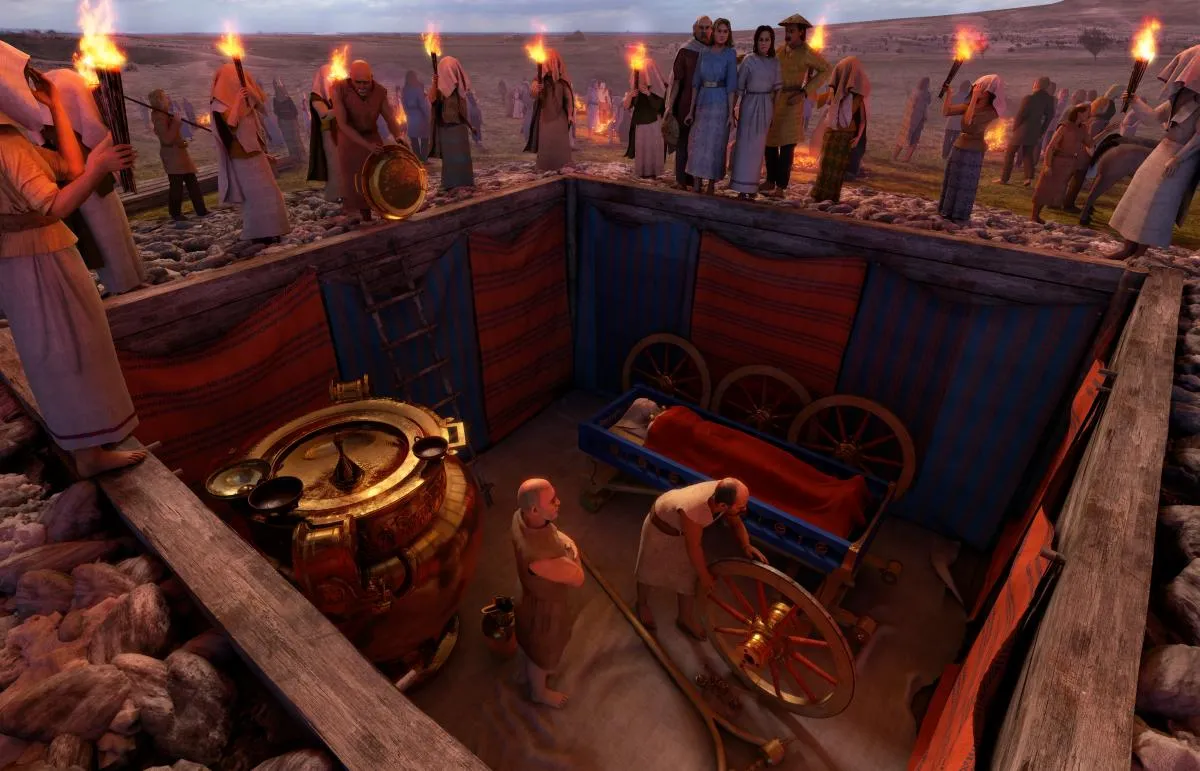
Until recently, the only Vix I knew about was the stock market’s Volatility Index (abbreviated VIX). If there were a volatility index for cryptocurrencies, I’d surely invest in it. And then there’s that cold medicine called Vicks. I caught a seasonal cold a couple of days ago, and my sinus headache felt like a hangover (though I didn’t drink) on New Year’s Eve. So I skipped the festivities and made an early night of it, waking up to 2018 when my dog needed to go outside in the early morning hours.

Vicks cold medicine.
It turns out there is another Vix, which I learned by viewing a documentary film last week about early Celtic burial sites in Europe. The Celts were somewhat mysterious, since their origins are not well known. Many people think of the Celts as largely having inhabited Ireland, Scotland, and Britain, where the language and cultural roots remained strong. But the early Celts were based much further south. Some historians even believe that those who reached the British Isles were a different people altogether.
Celtic grave sites from the 5th or 6th century indicate the culture was focused in modern day France, Germany, Switzerland, and Austria. These were the Hallstatt Celts, named for an extensive burial site located in Hallstatt, Austria, near the city of Salzburg. This site was located near a valuable salt mine and it dated back even earlier than many others. Over time, they spread to other regions of Western, Central, and Eastern Europe.
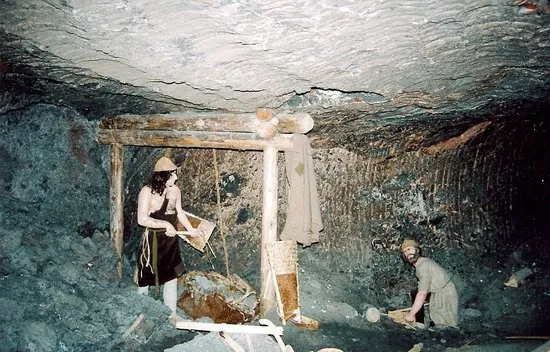
Hallstatt Salt Mine with depiction of early miners. Source link below.
Who Were the Original Celts?
Burial sites make it clear that the early Celtic culture had a strong Mediterranean orientation. Their most important people were buried with extensive riches, many of which were Greek or Italian in origin. It is not known whether they came from the Mediterranean region originally or simply traded heavily with the high cultures to the south. But the Greeks also provide the first written record of the Celts (which is important, since the Celts left no written records of their own).
The Greek historian Herodotus, who lived in the 5th century B.C., provided the first historical mention of the Celts. Herodotus was quite amazing himself, since he was the first Greek writer who ever mentioned anything beyond the Mediterranean region. He was known to have been born in the Persian Empire (in modern day Turkey) and he travelled extensively in the Mediterranean and Black Sea regions, chronicling many of the stories he heard.
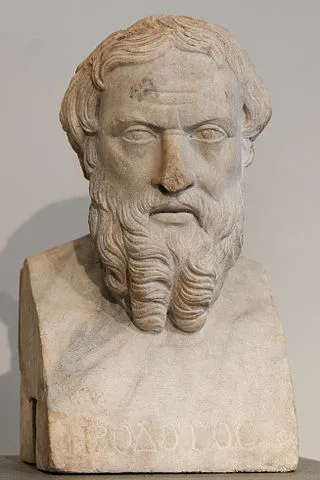
The Greek historian Herodotus. Creative Commons via Wikimedia by Marie-Lan Nguyen.
Some were more believable than others, but many of his details have fit with other historical evidence. Like other writers of the time, Herodotus shared his historical chronicles by reading them in public. To great fanfare, he travelled to the Olympic Games and read his entire Histories to the crowd there.
Herodotus gave us the name Celts, which is used today. He described the people as living on the upper reaches of the Danube River. (He also said they dwelled beyond the “pillars of Hercules”, though that may have been one way to say they were not in the Mediterranean sphere. There were Celtic sites in Spain as well, beyond the Straits of Gibraltar that are generally believed to have been the pillars.)
If he traveled in the Black Sea region, then Herodotus may have seen the Danube River himself, since it empties into the sea there. He also would have come into contact with traders who voyaged further up the river. The Danube begins in the Black Forest in southern Germany and today it touches no less than 10 countries on its way to the Black Sea. From the Black Forest to the Black Sea, is one of the world’s longest rivers.
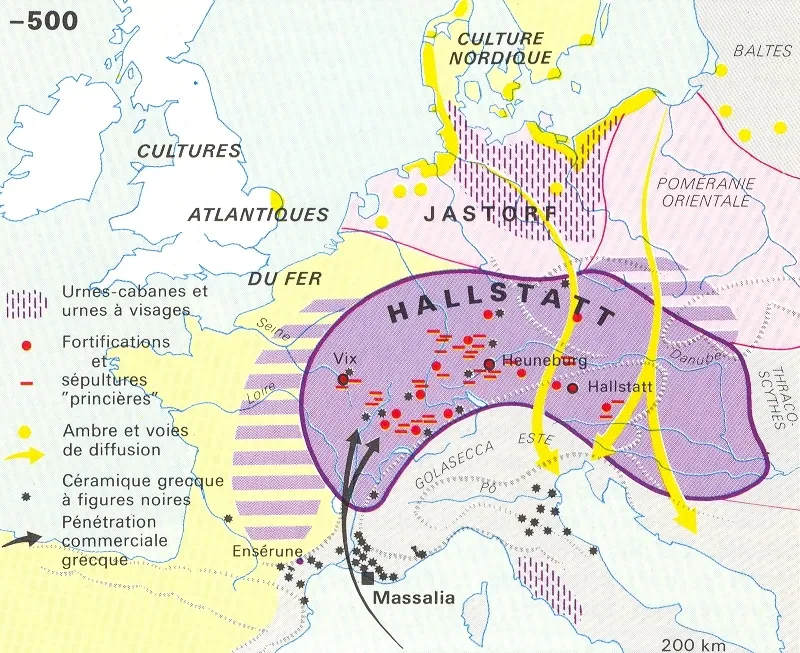
Map of the Hallstatt Celt culture. HistoryGuru.com.au.
An important Celtic site was unearthed at Heuneburg, in southern Germany, which sits near the banks of the upper Danube. It would have been a hugely important trading site and there is archaeological evidence that thousands of people may have lived at the Heuneberg citadel. The location on the upper Danube seems to be a perfect match for Herodotus’ account.
The Lady of Vix and Her Treasures
At early Celtic sites around Europe, very important people were buried with an impressive amount of their wealth. It is probably no accident that many such sites were located on major rivers, where the Celts would have been in a position to profit from these trade routes. This is certainly true of Vix, in northern Burgundy, France. Vix was the site of a large Celtic complex, centered on Mont Lassois, which could have controlled trade on the Seine River during its heyday in the 5th and 6th centuries B.C.
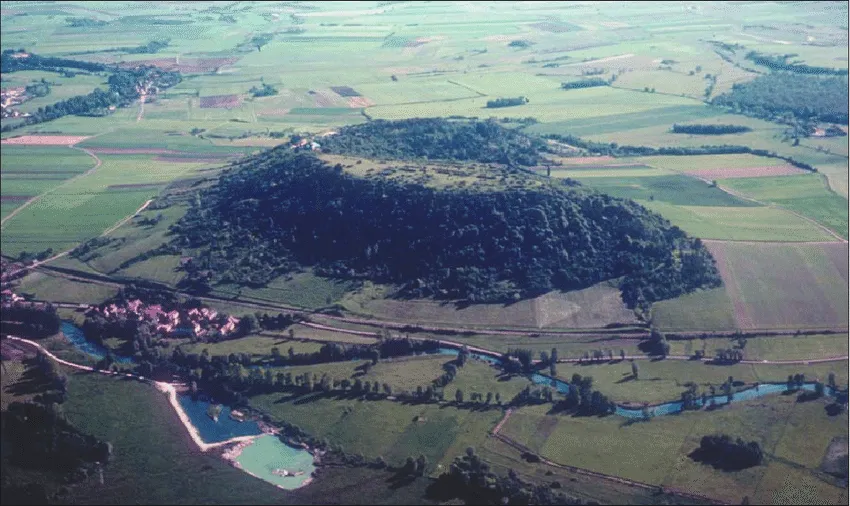
Mont Lassois, the flat hill topped by the Vix complex, set in a perfect position to control trade on the river. http://artehis.u-bourgogne.fr/.
A large palace building was excavated at the Vix site, its design resembling the architecture of early Greek halls. A big quantity of expensive and imported materials was found all over the complex, suggesting plenty of wealth and trade. In about 500 B.C., a woman of great importance was buried nearby.
The Lady of Vix has sometimes been called the Queen, Princess, or Priestess of Vix. Her identity is something of a mystery, but she was treated with extreme reverence. The Lady of Vix was buried with a chariot (cart) and a large amount of jewelry, including a 24-karat gold torc of 480 grams, a bronze torc, six fibulae, six slate bracelets, a bracelet of amber, and Etruscan rings. Nearby was a necklace of amber that probably belonged to her also.
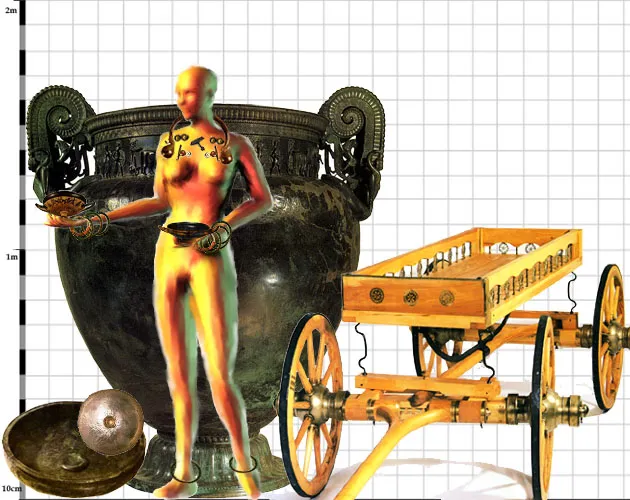
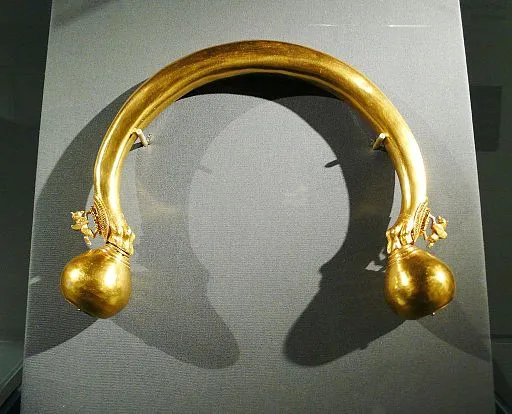
Lady of Vix and her possessions. Source: Realms-of-gold.com; Gold torque from Vix. Creative Commons via Flickr by Rosemania.
Her jewelry included items of both amber and coral. Amber, the fossilized tree resin which is highly prized, came from the Baltic region of northern Europe. The white coral in her jewelry would have come from the Mediterranean. These two items alone, found in modern-day Burgundy, are testament to a robust trading network at the time which must have stretched thorough Europe in almost every direction.
The Giant Krater
Herodotus also told of a giant bronze krater (a decorated pot often used for winemaking), made by the bronze smiths of Sparta and destined for a Lydian king (in modern day Turkey). He wrote that it was so big that it could hold 300 amphora of wine (about 300 gallons). But throughout history, there had never been any discovery that came close to this size. Historians laughed at the claim as a tall tale from Herodotus, since Greek kraters tended to be much smaller.
Then in 1953, a French archaeologist began scraping away mud from an object at the Vix grave that turned out to be a carved Gorgon with her tongue sticking out. It was a decoration on an immense Greek object, the likes of which no one had ever seen before. The object was a huge krater.
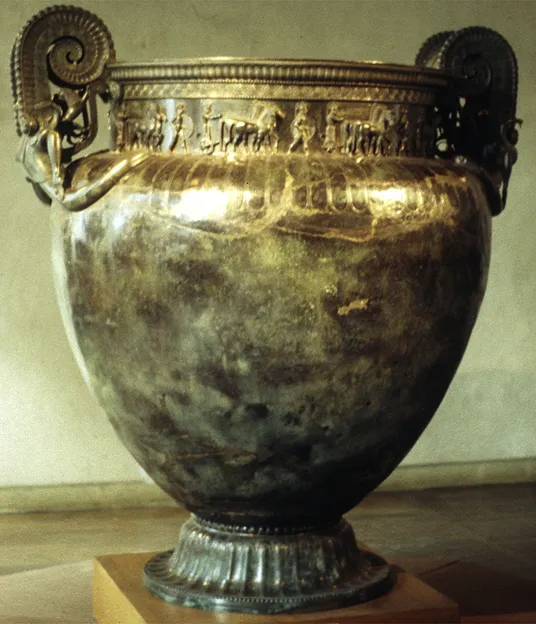
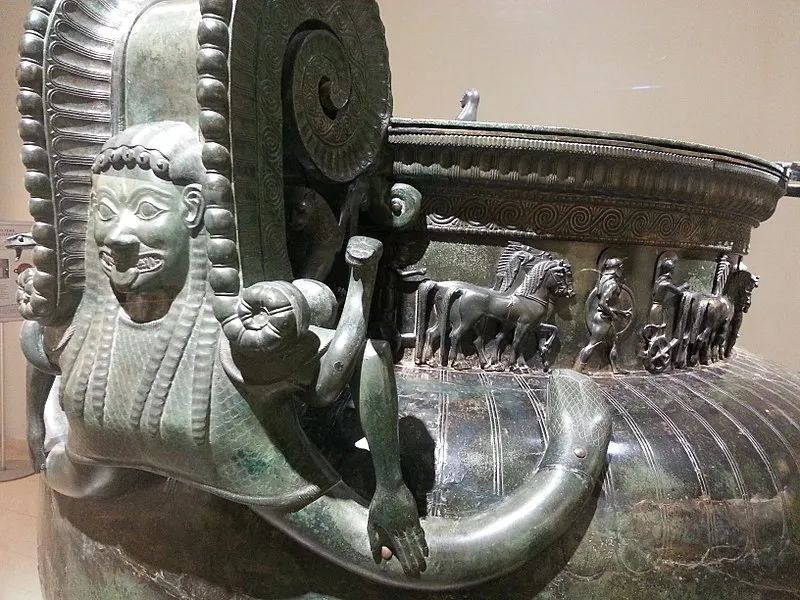
*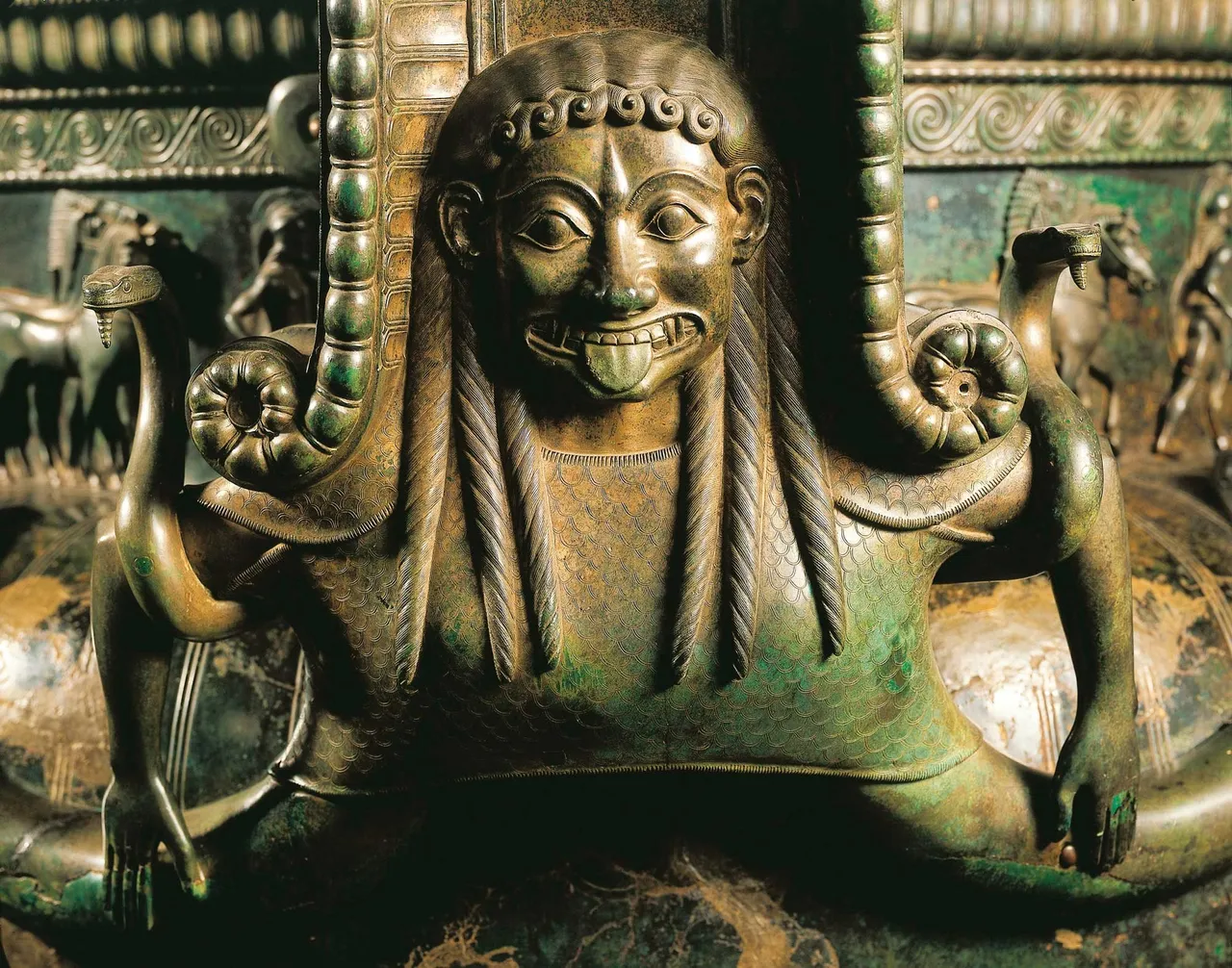
Krater of Vix and its detail work. Top: Creative Commons via Wikimedia by Peter Northover. Middle: Creative Commons via Wikimedia by Wikirigaou. Bottom: Nationalgeographic.com.
The bronze pot measured 5 feet 4 inches tall (1.63 meters) and weighed 450 pounds (200 kg). At 1100 liters, its capacity was almost exactly the 300 amphora (300 gallons) that Herodotus had described. This is the largest bronze vessel ever found from the western Classical period. And of all the possible kings and courts and rich merchants of the ancient world around the high culture of Greece, this krater was found thousands of miles/kilometers from the ‘known’ ancient world of the time.
It was buried in the tomb of the Lady of Vix.
Sources:
Enigma of the Celtic Tomb (video): https://www.amazon.com/Enigma-Celtic-Tomb-Alexis-Favitski/dp/B075H6RGV1
Herodotus: http://www.history.com/topics/ancient-history/herodotus
More on Herodotus: https://en.wikipedia.org/wiki/Herodotus
Heuneberg Celtic Site: https://en.wikipedia.org/wiki/Heuneburg
Vix Grave: https://en.wikipedia.org/wiki/Vix_Grave
The Huge Greek Krater at Vix: http://www.nytimes.com/1984/04/01/travel/a-greek-treasure-in-france.html?pagewanted=all
Musee du Chatillonais: https://www.burgundytoday.com/historic-places/museums/musee-du-chatillonnais.htm
Salt Mine Picture: https://www.tripadvisor.com/LocationPhotoDirectLink-g190427-d607563-i17172875-Salz_Welten-Hallstatt_Upper_Austria.html#17172875
Top image: www.geo.de